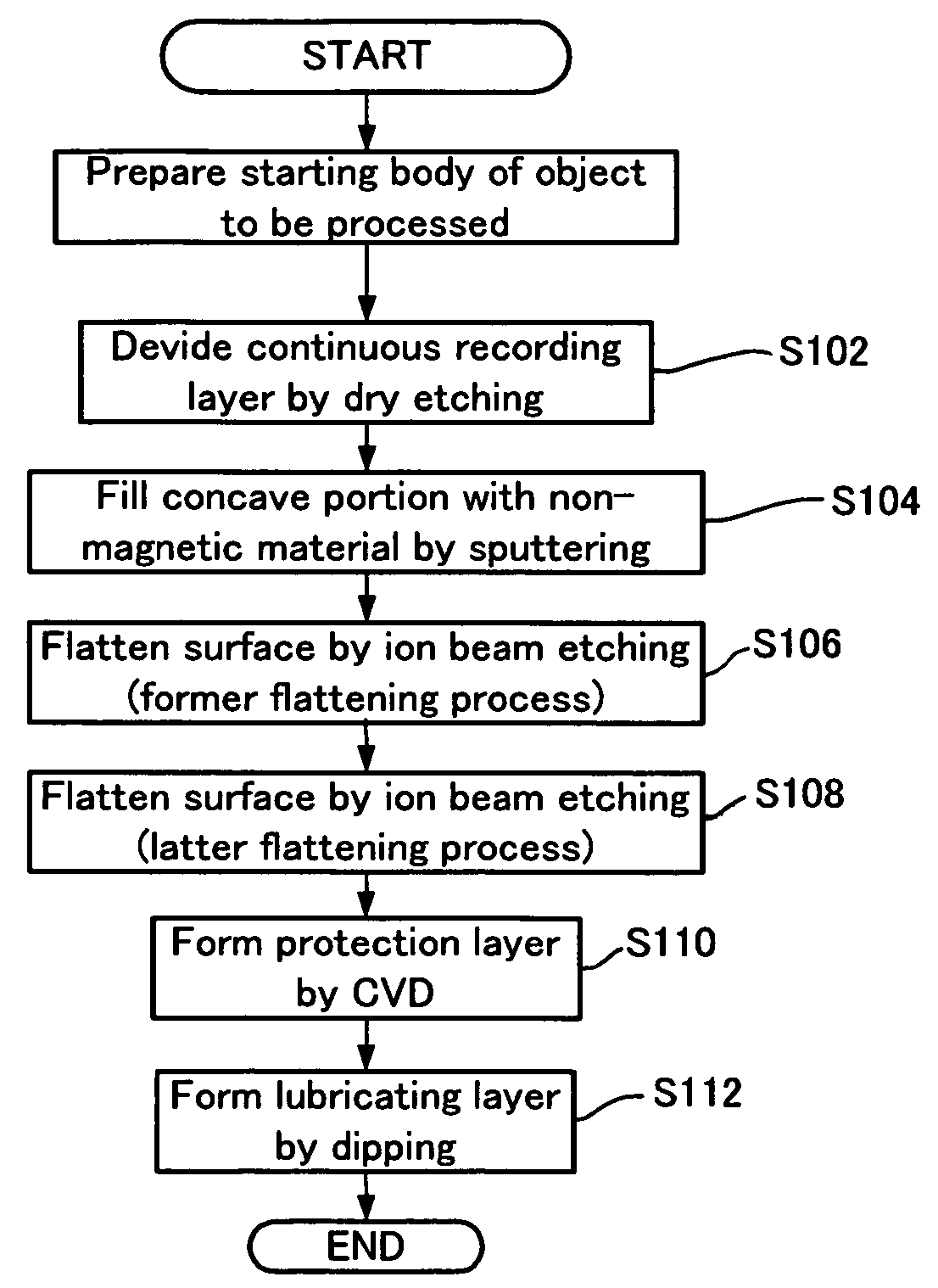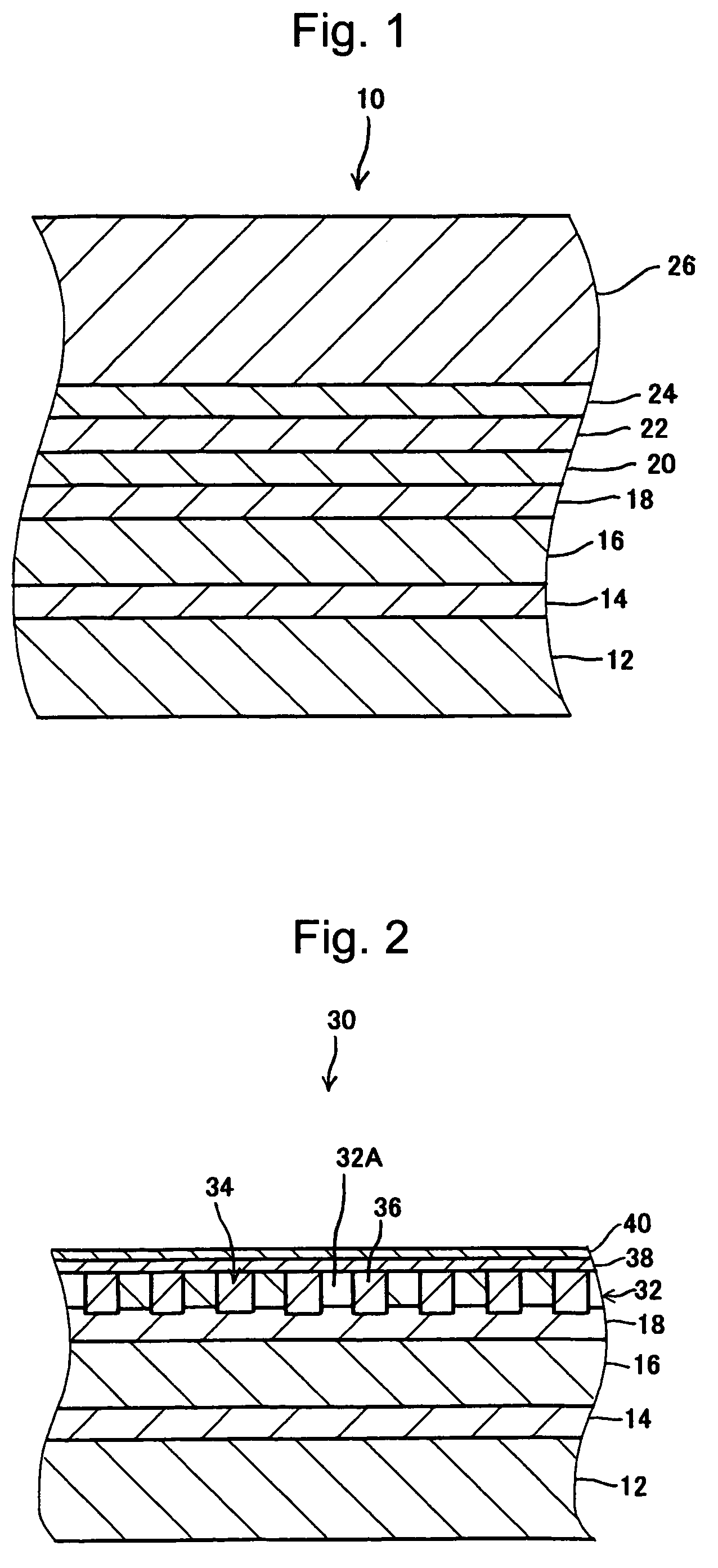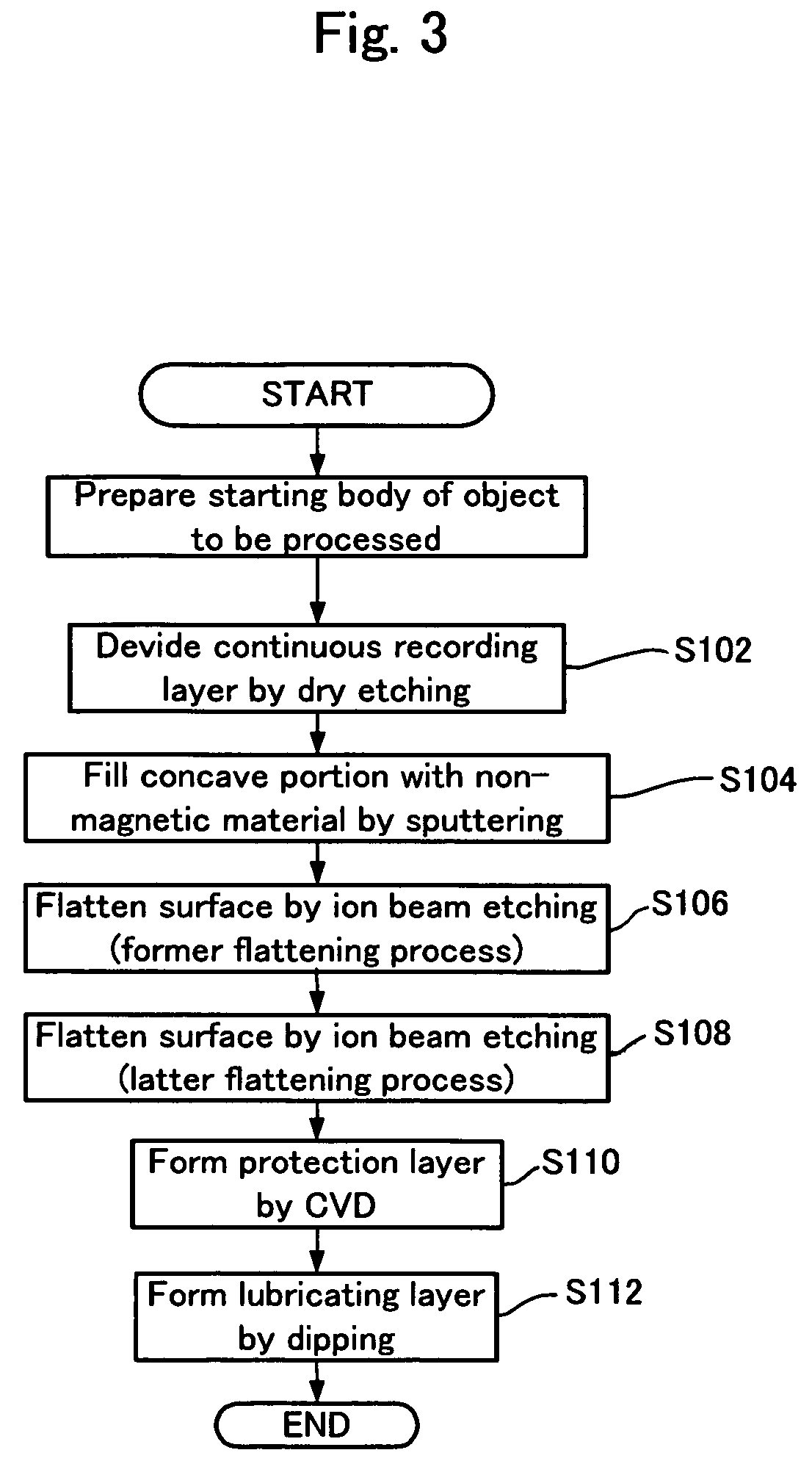Method for manufacturing a magnetic recording medium
a manufacturing method and magnetic recording technology, applied in the direction of magnetic materials, magnetic bodies, coating carrier supports, etc., can solve the problems of insufficient flattening rate, insufficient production efficiency, and difficulty in sufficiently flattening the surface of the medium to the desired level, so as to achieve efficient and sufficient flattening, good production efficiency, and sufficient flattening
- Summary
- Abstract
- Description
- Claims
- Application Information
AI Technical Summary
Benefits of technology
Problems solved by technology
Method used
Image
Examples
working example 1
[0078]A magnetic recording medium 30 was manufactured in the manner described in the first exemplary embodiment. More specifically, the recording layer 32 was formed in the following concavo-convex pattern.
[0079]Pitch: 150 nm
[0080]Width of a convex portion: 95 nm
[0081]Width of a concave portion: 55 nm
[0082]Step between the convex portion and the concave portion: 20 nm
[0083]Then, in the non-magnetic material filling step (S104), the non-magnetic material 36 was deposited to have a thickness of approximately 40 nm under the following conditions, thereby filling the concave portions 34 with the non-magnetic material 36. Please note that the above-described thickness of the non-magnetic material 36 is a distance between the highest projecting portion of the surface of the deposited non-magnetic material 36 and the upper surface of the recording layer 32.
[0084]Input power: 500 W
[0085]Ar gas pressure: 0.3 Pa
[0086]Bias power: 250 W
[0087]Then, in the former flattening step (S106), the non-m...
working example 2
[0099]In Working Example 2, only C2F6 (hexafluoroethane) gas was used in the former flattening step (S106) and mixed gas of Ar gas and C2F6 gas was used in the latter flattening step (S108), unlike Working Example 1. The other steps were performed in the same manner as those in Working Example 1.
[0100]In the former flattening step (S106), the conditions were set as follows, and the non-magnetic material 36 was removed to the portion away from the upper surface of the recording layer 32 by approximately 5 nm.
[0101]C2F6 gas flow rate: 11 sccm
[0102]Flow rate ratio of Ar gas in mixed gas: 0%
[0103]Gas pressure: 0.05 Pa
[0104]Beam voltage: 500V
[0105]Beam current: 500 mA
[0106]Suppressor voltage: 400V
[0107]Incident angle of ion beams: +90°
[0108]The etching rate of the non-magnetic material 36 (SiO2) in the former flattening step (S106) was approximately 830 Å / min and the time required for processing was approximately 25 seconds.
[0109]On the other hand, in the latter flattening step (S108), t...
PUM
| Property | Measurement | Unit |
|---|---|---|
| incident angle | aaaaa | aaaaa |
| thickness | aaaaa | aaaaa |
| thickness | aaaaa | aaaaa |
Abstract
Description
Claims
Application Information
 Login to View More
Login to View More - R&D
- Intellectual Property
- Life Sciences
- Materials
- Tech Scout
- Unparalleled Data Quality
- Higher Quality Content
- 60% Fewer Hallucinations
Browse by: Latest US Patents, China's latest patents, Technical Efficacy Thesaurus, Application Domain, Technology Topic, Popular Technical Reports.
© 2025 PatSnap. All rights reserved.Legal|Privacy policy|Modern Slavery Act Transparency Statement|Sitemap|About US| Contact US: help@patsnap.com



